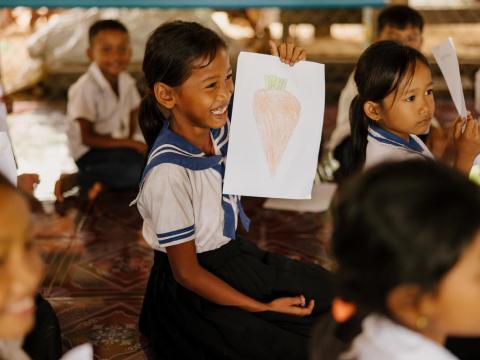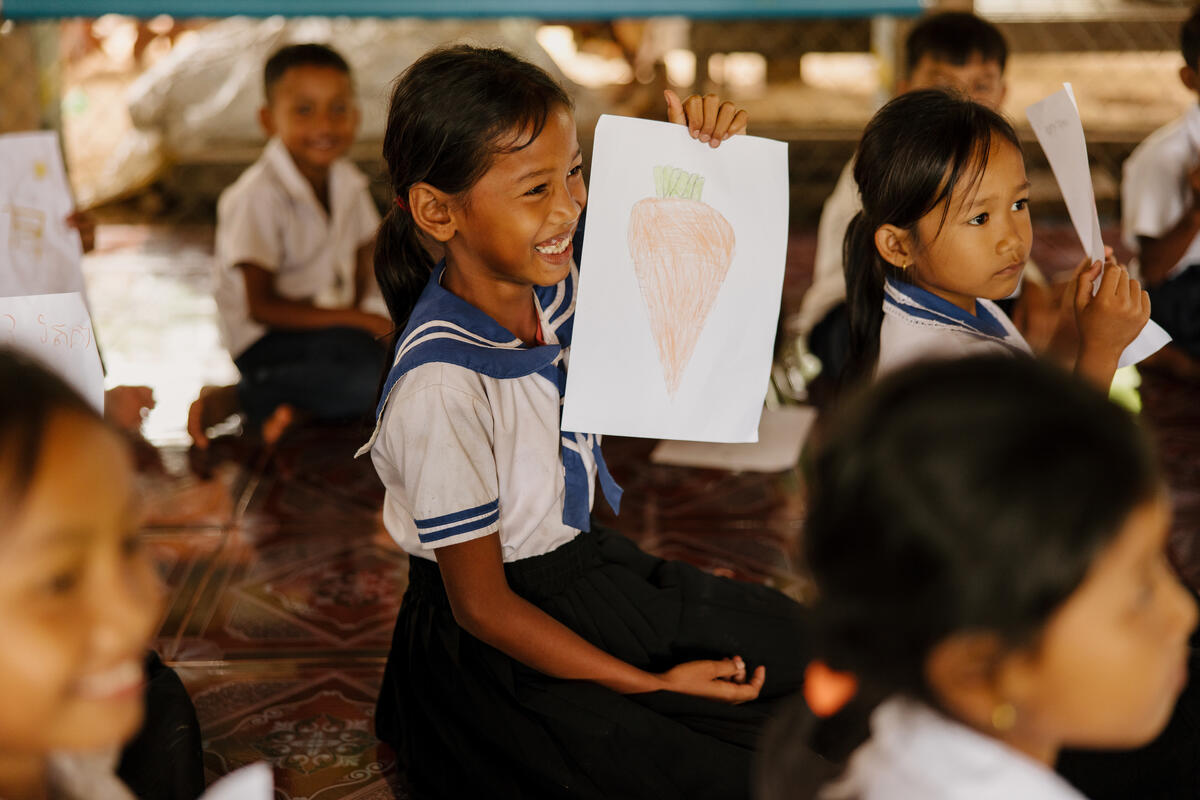The World Where We Live: Cambodia

This is a land of rainforests, rice paddies, rivers and floodplains, where counting the chirps of a gecko is said to predict whether you will get married, funerals can last up to 49 days, and wide smiles are the most popular accessory. Home to 16.9 million people, welcome to Cambodia. This is the world where we live!

There’s a Khmer saying ‘Sralanh kaun muoy tao. Sralanh chao muoy thaing’ (Love your children one tao. Love your grandchildren one thaing.) One thaing equals two tao, so this means love your grandchildren twice as much – that’s a lot of love! World Vision has been partnering with children and families in Cambodia since 1970 to transform the lives and futures of today’s children and the generations to come. Today, child sponsors are helping 110,000 children to thrive.

Rice, anyone? More than 70% of Cambodia’s farmland is rice paddies, and rice makes up about 50% of the total farming output. Cambodia is on the frontlines of climate change, with increasingly frequent floods and droughts taking a heavy toll on farmers and everyone who relies on them. Child sponsors are helping farmers adapt with farming methods like crop irrigation, mulching and fertilisers made from compost to improve harvests and food security.

Water, water everywhere! Cambodia is home to the largest freshwater lake in South-East Asia. Found in the north-west of the country, Tonlé Sap, or ‘Great Lake’, swells from an area of 2,700 km2 in the dry season to 16,000 km2 at its peak in the wet season. Imagine Rhode Island swelling to the size of Connecticut! That’s a lot of water!

Cambodia is a young country – almost half the population is younger than 25 years. But traditionally, children don’t have a voice in the decisions that affect their lives. Child sponsors are helping to change that with youth clubs across the country, giving children like 16 year old Soey the chance to build skills and confidence to make their voice heard.

The population might be young but Cambodia’s Khmer culture dates back thousands of years. Angkor Wat is the world’s largest religious structure, covering 162 hectares (400 acres). No wonder its name means ‘City of Temples’! A national treasure, Angkor Wat even features on the national flag.

While about 90% of children finish primary school in Cambodia, only 15% finish high school and go on to university and a recent study found just 45% of Grade 6 students could read proficiently. The child sponsorship programme is helping to bridge this gap, holding reading camps at the weekends for children, especially in remote areas, to support children’s reading and make learning fun.

What’s for dinner? Because of the abundance of waterways in Cambodia, fish, vegetables and rice form the staple diet, but insects such as crickets and ants – and even tarantulas – are also on the menu. The national dish is fish amok, a coconut fish curry steamed in banana leaves.

Holiday season! Mid-April in Cambodia means two things – the end of the harvest season and beginning of the new year. Called Choul Chnam Thmey in Khmer, the local language, the Lunar New Year Festival is the biggest celebration of the year. It lasts for three days and includes Buddhist ceremonies, offerings and giving donations to help others.

Motorbikes, bicycles and tuk-tuks are the transport of choice in Cambodia. It’s not uncommon to see a whole family onboard one bike! The country is also the fifth-largest exporter of bicycles in the world and has a booming second-hand market.

It’s game time! Tug of war and hide and seek are popular games, especially around Khmer New Year, but breaktime in any Cambodian schoolyard will find kids busting out impressive high jump feats. The aim of the game is to get over the rope, usually achieved with an artful tuck by one foot to pull the rope down and a midair pivot to get the other leg and the rest of the person over too. It’s not for the faint hearted!
Child sponsorship – partnering with children and communities to break the cycle of poverty in over 1250 communities in this big, beautiful world.